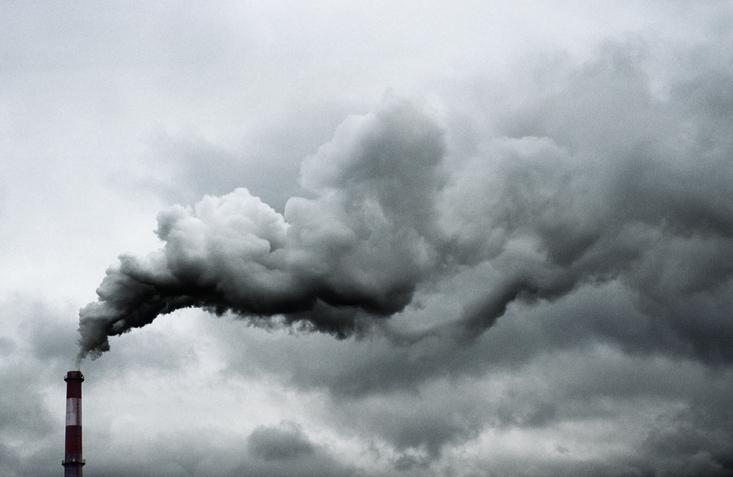 |
|
Industrial pollution adds particulate matter (chiefly carbon) and toxic gases into the atmosphere, increasing oxidative stress and elevating the risk of many downstream health concerns, including angle closure glaucoma. Photo: Getty Images. |
There have been studies about a possible association between air pollution and glaucoma, but the relationship remains poorly understood. A team in China recently published their findings on the association between long-term air pollution exposure and acute primary angle closure. They found that long-term exposure to fine particulate matter, inhalable particulates and sulfur dioxide led to an increased risk of the condition.
A total of 1,011 participants were included: 281 with angle closure and 730 age- and sex-matched controls. The average age was 64 and 31.1% were men. Residential exposure to ambient air pollutants, including fine particulate matter (PM2.5), inhalable particulate (PM10), nitrogen dioxide (NO2), sulfur dioxide (SO2) and ozone were estimated using weather satellite data or ground measurements.
Long-term exposure to PM2.5, PM10 and SO2 were all significantly associated with an increased risk of acute primary angle closure. The angle closure odds ratio for those exposed to the pollutants was roughly 1.28, the study showed.
Previous studies suggest that high levels of PM is associated with self-reported glaucoma. Similar to our findings, results from the rural Chinese regions and the UK Biobank data observed that long-term exposure to ambient PM is related to an increased risk of glaucoma.
The annual average concentration of PM2.5 in Shanghai in this study was 37.25μg/m3, which was higher than that in the UK Biobank data (9.9μg/m3) and lower than that in rural Chinese regions (62.4μg/m3).
A study conducted in Shanghai found that acute exposure to PM2.5, PM10, NO2 and CO was associated with increased outpatient visits of patients with acute glaucoma. That one and the present study “indicated that both very short- and long-term exposure to PM2.5 and PM10 were related to increased risk of acute glaucoma attack,” the team wrote in their paper for Translational Vision Science & Technology. However, the prior study included both angle closure and glaucomatocyclitic crisis as “acute glaucoma” and different pathogenic mechanisms need to be looked at separately, the authors explained.
The biological mechanisms underlying the adverse effects of ambient air pollution exposure on glaucoma remain unclear. “Animal experiments in mice showed that PM2.5 exposure resulted in IOP increase,” the authors explained in their report. “Moreover, it has been demonstrated that air pollution is related to increased levels of oxidative stress and pro-inflammatory factors. Oxidative stress markers and inflammatory cytokines have been reported to be elevated in the aqueous humor and serum of patients with glaucoma. Increased oxidative stress and the subsequent activation of NLRP3 inflammasome-mediated proptosis were observed in the trabecular meshwork cells after PM2.5 exposure, finally affecting the functions of trabecular meshwork cells.”
Additionally, the specific constituent of PM2.5—black carbon—is reported to be a risk factor for increased IOP in male individuals with high oxidative stress allelic score, the paper explained. However, the authors noted that the acute obstruction of anterior chamber angle is the main mechanism of angle closure. Whether and how anterior segment anatomy is influenced by air pollution remains unknown.
“We speculate that long-term exposure to air pollution may cause the edema of ciliary body and choroid through the mechanisms of oxidative stress and inflammation, finally leading to a more crowded or even closed angle,” they proposed, adding that it’s worthwhile to “develop environmental interventions and public health policies aimed at addressing air pollution” to help reduce the risk of acute primary angle closure and related conditions.
Wu N, Shi W, Sun X. Association of long-term exposure to ambient air pollution with the risk of acute primary angle closure. Transl Vis Sci Technol. 2024;13(3):7. |


